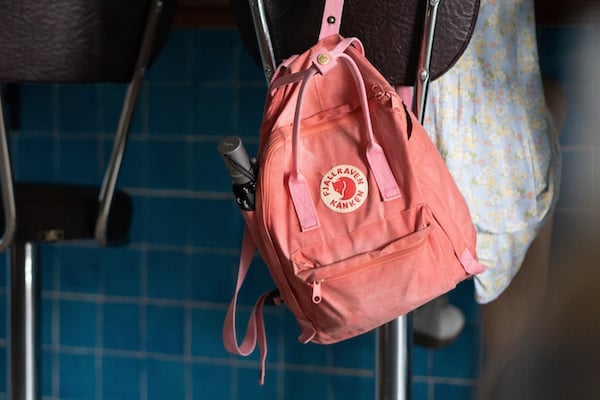Published on
Shifting the View from Dropout to Stopout

“Dropout.” What is the first thought that comes into your mind when you hear this phrase? By definition, a dropout is one who abandons an attempt, activity, or chosen path.[1] The experiences of the students I work with[2] fit more closely to the definition of “stopout”: to withdraw temporarily from enrollment at a college or university.[3] Their displacement from higher education is not a result of abandonment, but of a change in the direction of their chosen path.
How we frame the language around students leaving college is important. If we begin conversations about college re-enrollment by calling them dropouts—by insinuating that they gave up—we ignore the true obstacles they face. We resign these students to failure instead of asking how we, as administrators and faculty, can help them complete their education.
Barriers to Education
So, why do college students leave school in the first place? There are multiple obstacles I’ve seen in my own work, as well as those that have been documented by research such as a mental or physical health crisis, a lack of financial resources, gaining full-time employment, or starting a family.[4] These barriers ultimately take form in three categories: situational, institutional and dispositional.[5]
Imagine that you are 20 years old and the computer engineering company you interned with over the summer offers you a high salary with full benefits. They want you to start immediately, but that would mean putting your education on the backburner. What would you do? Many of my students in similar situations choose employment, either because they received an offer they “just couldn’t ignore” or to support their families. They often realize later they need a degree in order to advance further in their career. This is one example of a visible situational barrier that competes with a student’s academic goals.[6]
Let’s say you end up deciding you want to go back to finish your degree, but you also want to maintain full employment since, after leaving school, you started a family. Your situational barriers may start to clash with institutional barriers—that is, those that are embedded within the college or university itself. The courses you need to complete may not be offered as night, weekend, or online courses. If you do find courses that fit into your free time, your faculty’s office hours may not accommodate your extended schedule.[7]
Now, imagine you’ve gone through this process several times. You’ve come close to re-enrolling before; you’ve had your classes picked out and paid the deposit, but each time a barrier has popped up that required you to withdraw for the time being. What kind of toll would this take on your confidence in returning to school? Dispositional barriers account for these personal characteristics that can affect degree completion. These include low self-esteem, anxiety about succeeding in school,[8] and feeling out of place at a college.[9]
Why Does the Language Matter?
The term dropout does a disservice to students. It supports a “single standard” for college students, where those who fail to take the normal two- or four-year path to a degree are negatively labeled and blamed for abandoning their education.[10] This is not a matter of political correctness—it is about framing the question on how we help students who have stopped out. By acknowledging that there are often multiple barriers that affect a student’s withdrawal from college and looking at their withdrawal as a temporary stop instead of as a decision to abandon their education entirely, we set the stage for better policies and supports that help students succeed.
I challenge you to shift the view, start the conversation, and stop calling students who take a different path towards their educational goals dropouts. Not only that: I challenge you to be the guide these students need. Ask more questions. When you receive a re-enrollment form, offer a student information on support services at the university. If a student isn’t showing up for class or office hours, ask why. Break down the barriers to re-enrollment. Don’t build them.
—– References
[1] “Dropout.” In Merriam-Webster.com. Retrieved Sept 24, 2017, from https://www.merriam-webster.com/dictionary/dropout.
[2] Student Success Coordinator, Broome County HEARS (Higher Education Access, Retention, and Success)
[3] “Stop out” In Merriam-Webster.com. Retrieved Sept 24, 2017, from https://www.merriam-webster.com/dictionary/stop%20out.
[4] Osam, E. K., Bergman, M., & Cumberland, D. M. (2017). An integrative literature review on the barriers impacting adult learners’ return to college. Adult Learning, 28(2), 54-60.
[5] Osam, E. K., Bergman, M., & Cumberland, D. M. (2017). An integrative literature review on the barriers impacting adult learners’ return to college. Adult Learning, 28(2), 54-60.
[6] Goto, S. T., & Martin, C. (2009). Psychology of success: Overcoming barriers to pursuing further education. Journal of Continuing Higher Education, 57(1), 10-21.
[7] Hardin, C. J. (2008). Adult students in higher education: A portrait of transitions. New Directions for Higher Education, 2008(144), 49-57.
[8] Goto, S. T., & Martin, C. (2009). Psychology of success: Overcoming barriers to pursuing further education. Journal of Continuing Higher Education, 57(1), 10-21.
[9] Flynn, S., Brown, J., Johnson, A., & Rodger, S. (2011). Barriers to education for the marginalized adult learner. Alberta Journal of Educational Research, 57(1), 43-58.
[10] Seidman, E. (1983). Handbook of social intervention, 54.
Author Perspective: Administrator



